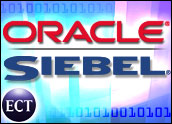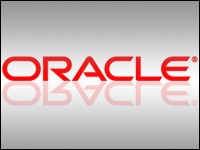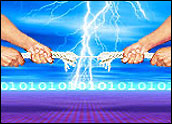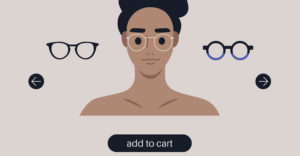
Both Oracle and Siebel have developed a reputation for maintaining a hard line on pricing. Now that they are merging, buyers of CRM and related software are apprehensive about how the consolidation will affect pricing.
Some of the possibilities are not very pretty. In one bleak scenario, Oracle becomes even more rigid, causing CRM pricing to spike even beyond the levels enjoyed by Siebel during its heyday in the 1990s. Then, customers paid roughly US$5,000 to $7,000 per seat for the full stack.
A worse nightmare is that competing vendors also harden prices since the existence of fewer alternatives relieves pressure to negotiate.
There is another conceivable outcome, though: Vendors, including Oracle, become more flexible in order to gain market share as a new enterprise-software price paradigm emerges.
SAP vs. Oracle
The first scenario is understandably causing jitters among CRM buyers, especially those that are familiar with Oracle.
“Everyone knows Oracle is a tough company to do business with,” Gartner Research Director Jane Disbrow told CRM Buyer.
Some price creep is expected for existing Siebel and PeopleSoft customers, as well as for very large enterprises that have no alternative to SAP, Kevin Smith, vice president of FrontRange, told CRM Buyer.
“Those customers don’t have a lot of good choices,” he said. “I think Oracle will use some finesse about it, but I do think these firms will eventually see some price creep, starting with maintenance.”
It is even more likely to occur over the long term, if Oracle is able to deliver a viable CRM solution through its Fusion application.
The worst-case scenario for enterprise software buyers — very hard prices — may be the least likely to unfold, however. The reason is simple, according to Disbrow. While there may be only one viable alternative — SAP — its existence is enough to keep Oracle from raising license fees significantly.
“Companies are still reluctant to make the same level of commitment they have in the past to PeopleSoft, even though it is still available,” Disbrow said. “They prefer a vendor with more stability. It is one of the reasons why SAP is doing so well.”
Indeed, the vendor-stability argument has been SAP’s mantra ever since Oracle made its play for PeopleSoft more than two years ago.
SAP doesn’t comment specifically on pricing, Bill Wohl, vice president of global communications, told CRM Buyer. “We don’t believe pricing drives CRM adoption, anyway.”
Rather, companies adopt mySAP CRM for its enterprise approach, that is, its ability to integrate CRM business processes throughout the enterprise, he said. When they consider the alternative — namely Oracle — it usually seals the deal.
“Customers turn to SAP for two reasons,” Wohl claimed. “One is the depth of our solution. The other is the enormous uncertainty of the alternative options.”
In other words, for the near term, the dynamics behind CRM pricing are unlikely to change, despite the significant consolidation in the industry. “SAP and Oracle hate to lose to each other,” Disbrow said. “So it is still possible for a company to play them off against each other.”
Oracle did not respond to an interview request for this article.
Fragmented Market
The notion that there is no Oracle alternative except SAP applies only to the largest of firms. One reason PeopleSoft ultimately failed to persuade the courts that its acquisition would result in a monopoly is that the enterprise resource planning (ERP) and CRM spaces are fragmented. Both — CRM to a lesser degree — are populated with a number of viable vendors.
FrontRange, for example, is gearing up to launch an enterprise version of its software, along with a multi-tenant hosted application, this year.
The company is currently researching the price points the market will accept, Smith said. There are fewer data points available than one would think, he has found.
For starters, buyers have become more demanding, expecting vendors to offer component-based applications that can be implemented on a piece-by-piece basis. Buyers also pay for excellence, Smith noted. “Going forward, vendors are going to have to earn the right to raise prices.”
The SaaS Factor
Another factor is the surge of software-as-a-service entrants to the market in recent years. Some of these applications are so robust they can go head to head with a relatively simple deployment of an enterprise application; certainly, Salesforce.com carved a niche for itself by fiercely advertising its competitiveness against Siebel.
Pricing for licenses has stabilized — except when an SaaS offering enters the mix, according to CRM industry expert Louis Columbus. “Prices and their erosion vary across each sector of the CRM market, yet the license pricing only takes a hit if a SaaS vendor is also in the deal,” he told CRM Buyer. “Then, the licensing vendor has to drop way below their average.”
This is astoundingly good news for buyers, as the SaaS space has become very competitive as well.
“Pricing on SaaS or hosted applications are plummeting as new market entrants try to undercut Salesforce.com,” Columbus said, adding that price competition in this area is very fierce.
Unfortunately, the SaaS effect has not translated into greater flexibility when it comes to maintenance fees for enterprise software — which can be a significant portion of an application’s total cost of ownership.
“Reduction in ongoing maintenance doesn’t happen very often,” Gartner’s Disbrow said. “Those percentages are staying stable.”
For standard maintenance, SAP charges 17 percent of the discounted license fee, according to Disbrow, while Oracle charges 22 percent.
Higher Stakes, New Focus
To sum up the situation, it is clear that consolidation is changing the CRM space, agreed Sheri Taylor Gilchrist, senior vice president of integrated marketing services at Harte Hanks.
Other factors come into play as well, such as increased competition and the move toward open-standards-based applications. These two opposing forces are likely to make the pricing issue moot after a while.
Still, “the stakes have become higher with the Siebel acquisition,” Gilchrist acknowledged.
That said, “for a lot of buyers, the decision to buy a certain application or suite has moved beyond price. They also look at the services a vendor offers and the business processes affected,” she added.
“These factors will be the next battleground among vendors — not price,” Gilchrist told CRM Buyer.
























































